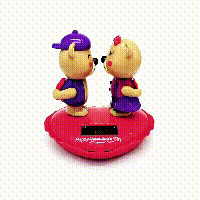Garbage Classification Should Learn from Japan
Japan's garbage is divided into seven categories:
The first category is combustible garbage, such as kitchen garbage, rubber products, clothing, paper products, leather products, video tapes, weeds, etc.
The second category is non-combustible garbage, such as tableware, kitchenware, glass products, dry batteries, light bulbs, small household appliances, disposable lighters, etc.
The third category is resource waste, such as cans, plastic bottles, books and newspapers.
The fourth category is rough garbage, such as bicycles, tables and chairs, sofas, microwave ovens, ovens, golf clubs, etc.
The fifth category is non-recyclable garbage, such as agricultural tools, fire extinguishers, bricks and tiles, cement, motorcycles, waste tires, etc.
The sixth category is four kinds of household appliances: TV, washing machine, air conditioning, refrigerator;
The seventh category is temporary large amount of garbage: garbage generated when moving or cleaning or pruning the courtyard.
Among the seven categories of garbage, there are subdivisions in each category. For example, in combustible waste, paper products, such as napkins, belong to non-renewable paper, but paper

Larger than postcards does not belong to this category, it is classified as "resource waste" and needs recycling.
Waste of resource type should be cleaned before being thrown away, and China's waste classification should follow suit.
The first step in garbage disposal is to classify the garbage carefully. A more important step is to clean up the garbage without causing trouble to the employees of the garbage disposal company. For example, soy sauce bottles, oil bottles, beverage bottles, beer cans, tinned iron boxes, especially the Sufu bottles that we Chinese like to eat, must be cleaned before we can throw them away. The same goes for instant noodles, milk and juice cartons.

gmtlight:Garbage Classification Should Learn from Japan much more,It's long way to go, but it's very very necessary for China.
It's also garbage throwing. What on earth is Japan doing?
It is also worth learning that Japanese cooperate with supermarkets in garbage disposal. For example, most seafood and meat products sold in supermarkets are made of white foam lunch boxes. When people buy food in supermarkets, they can't throw away the boxes of white foam materials like ordinary garbage, but wash them after use. Next time they go to the supermarket, they take them back and throw them into special recycling bins. The supermarket returns the lunch box to the manufacturer for processing.
At present, there are 40 factories producing lunch boxes in Japan, of which 8 factories produce and recycle lunch boxes. These eight companies account for 90% of Japan's total lunch box production.
Japan calls garbage disposal centers "renewable resources companies". That is to say, Japan's garbage disposal is not based on the principle of "eliminating garbage", but on the principle of "recycling resources" as the basic principle of garbage disposal. This principle provides a good foundation for Japan to create a society of resource recycling. For example, free toilets in Japan provide free toilet paper. On these toilet paper, you sometimes find a small line printed: these toilet paper are made from recycled tickets.
Therefore, Japanese garbage is not classified according to wet garbage and dry garbage, but from the perspective of the importance of recycling resources.
China is beginning to implement garbage classification. Should we start with high standards and strict requirements, earnestly learn from Japan and work out a complete set of garbage classification methods? Over time, people become accustomed to garbage classification.
友情提示:本网内容禁止转载,违者必究。



